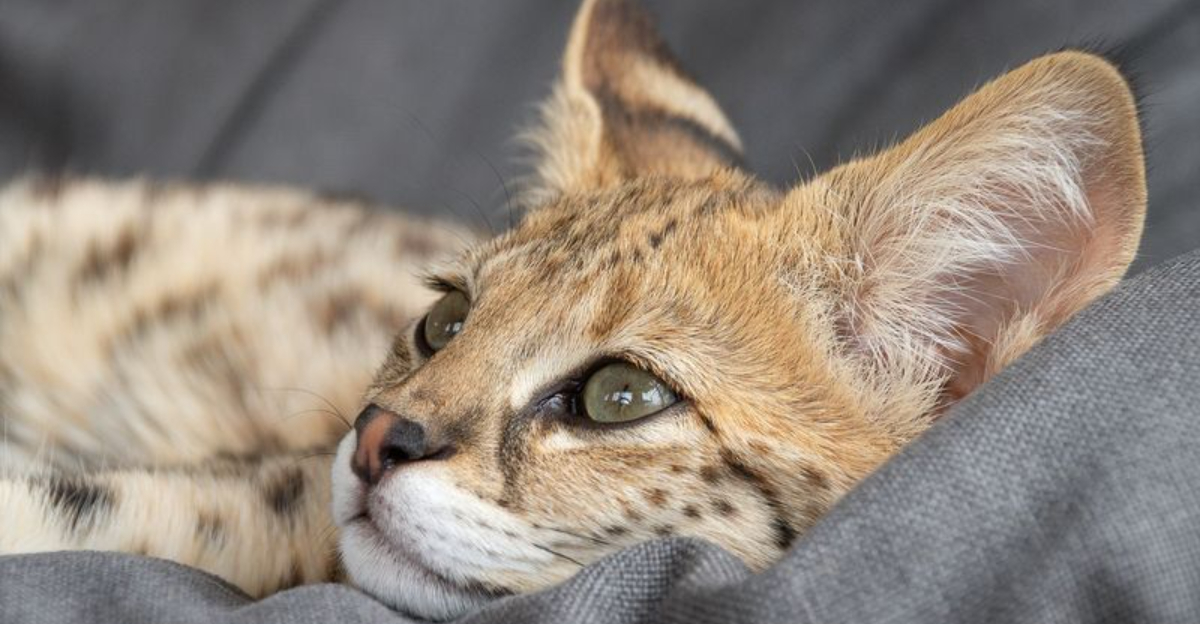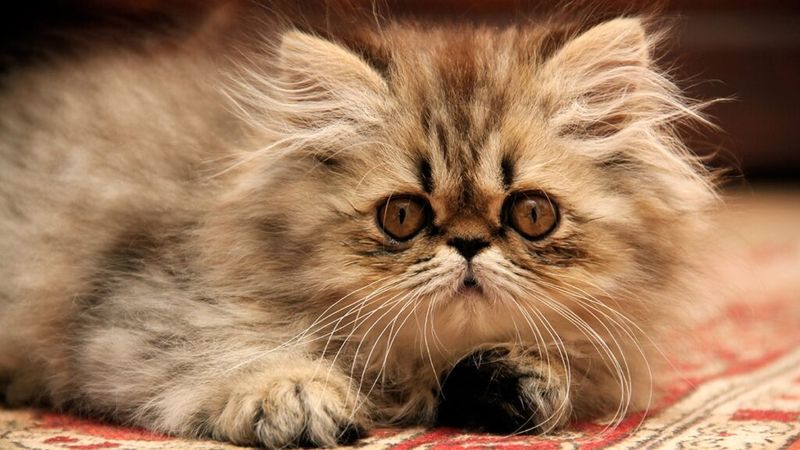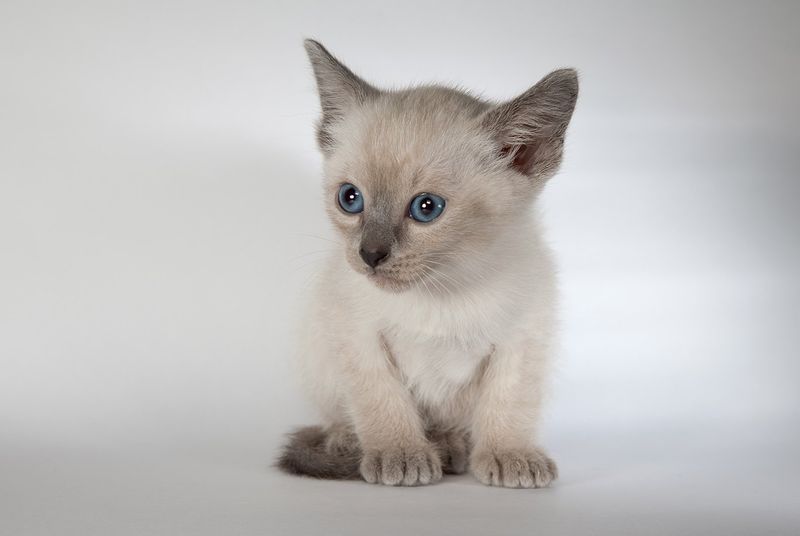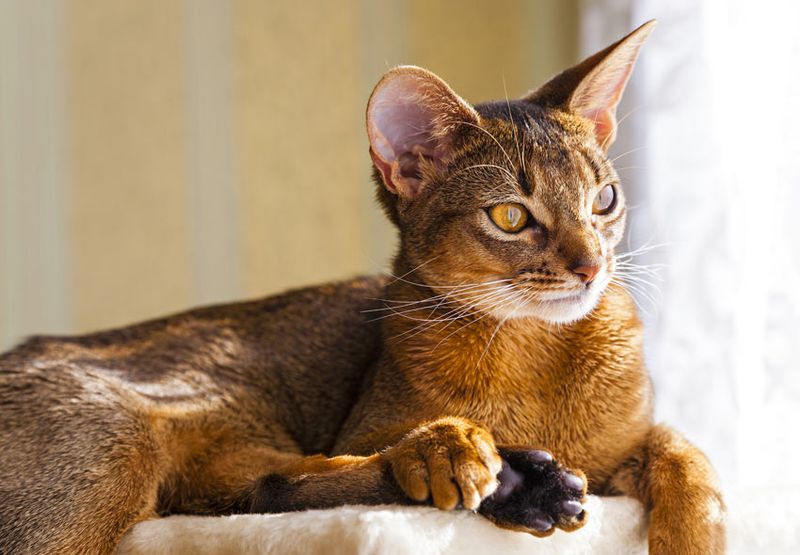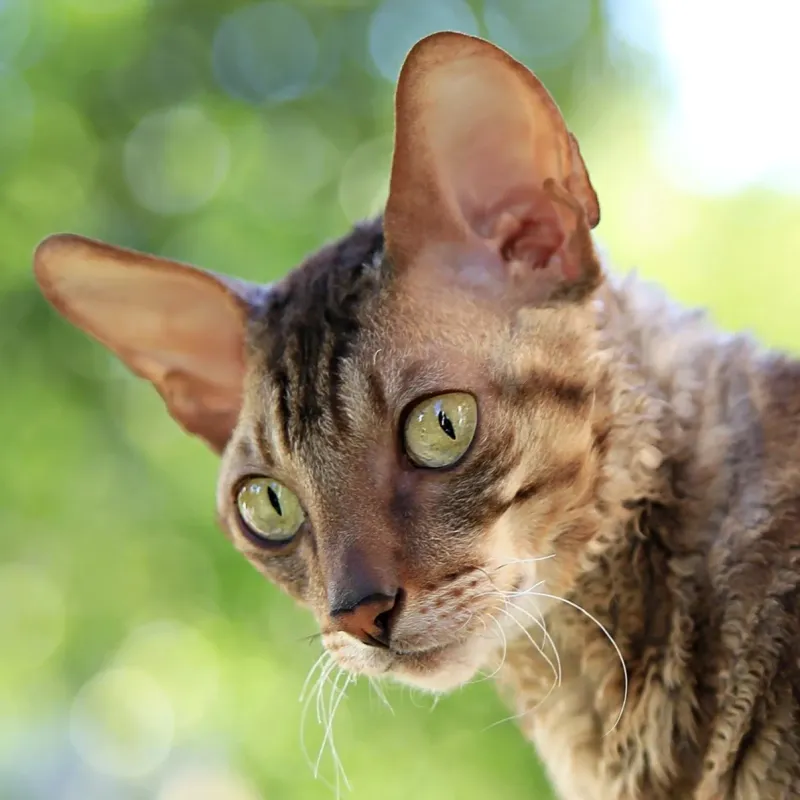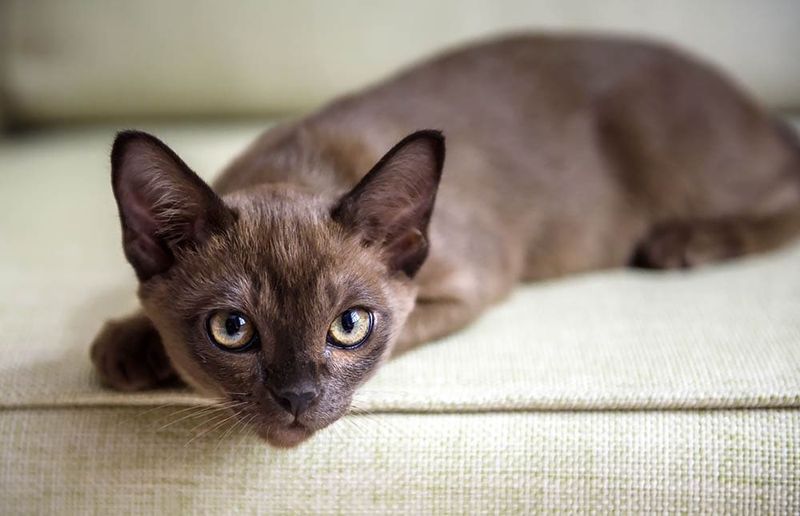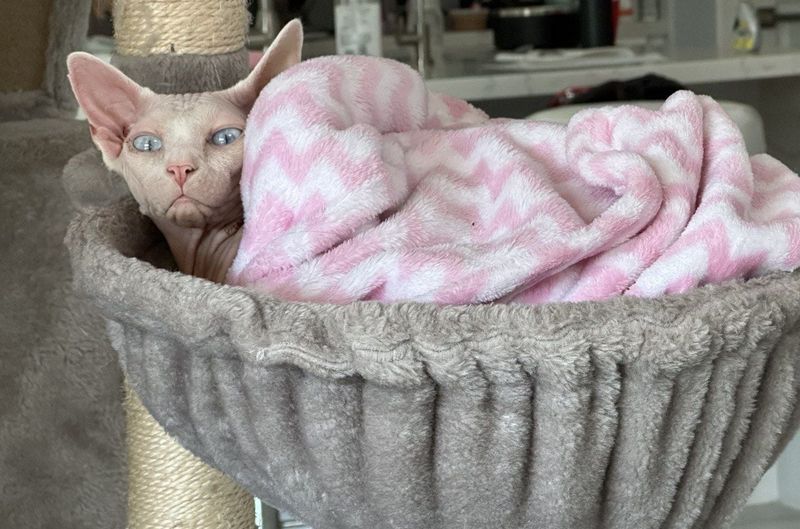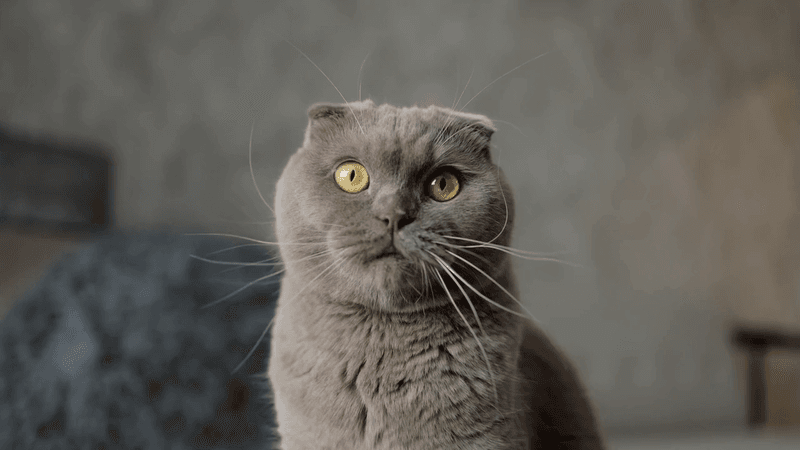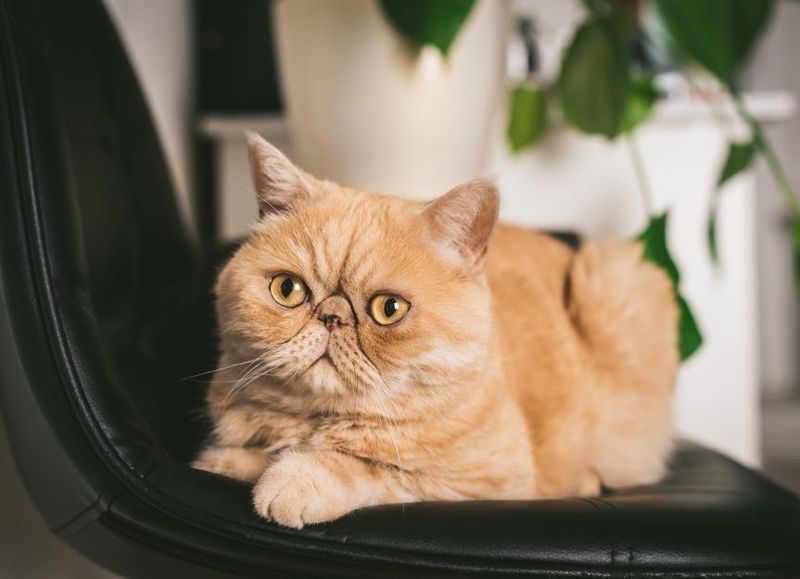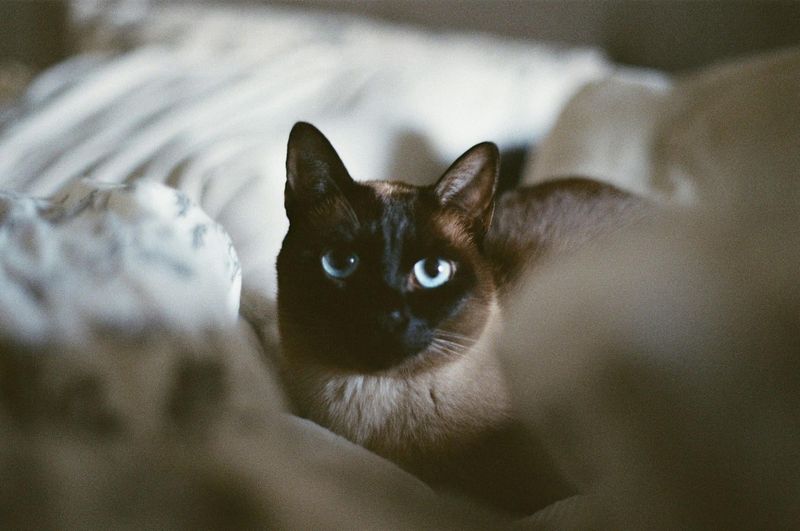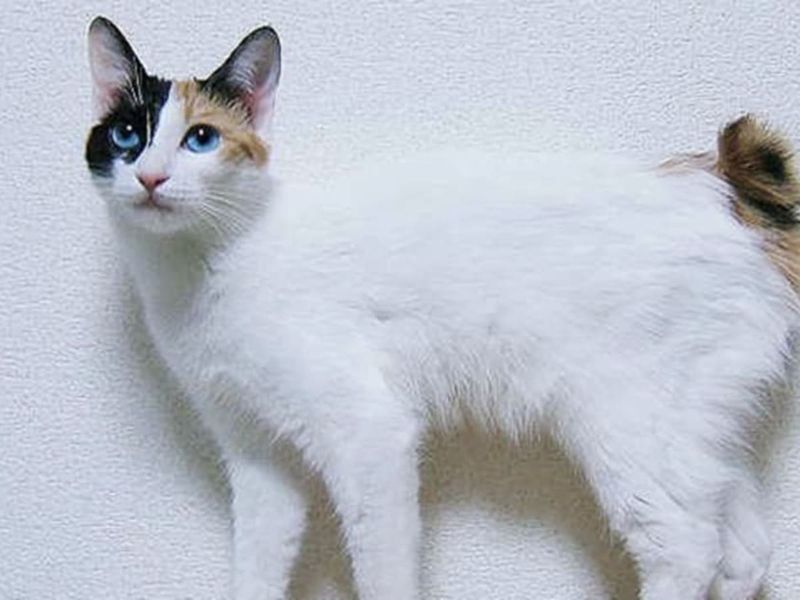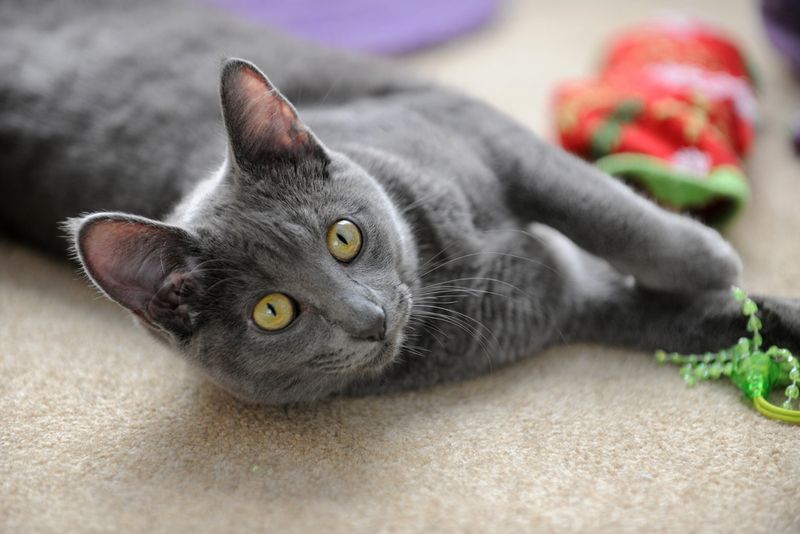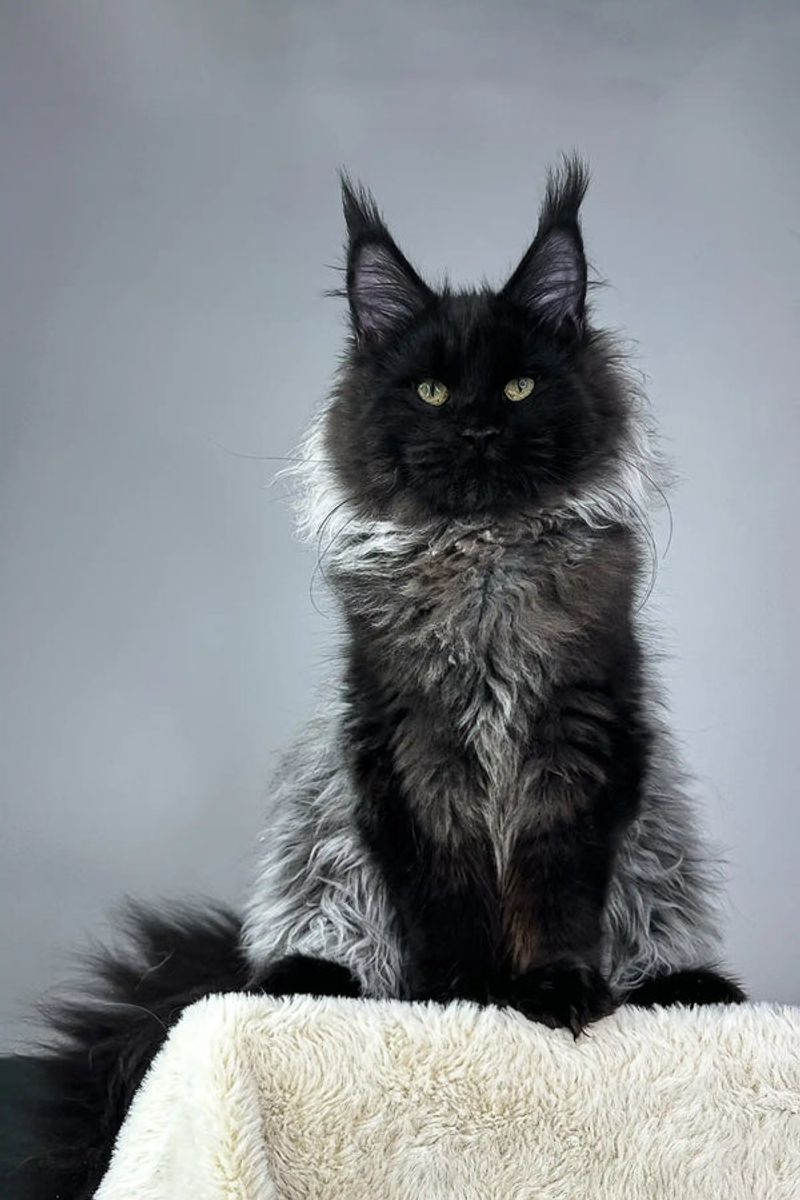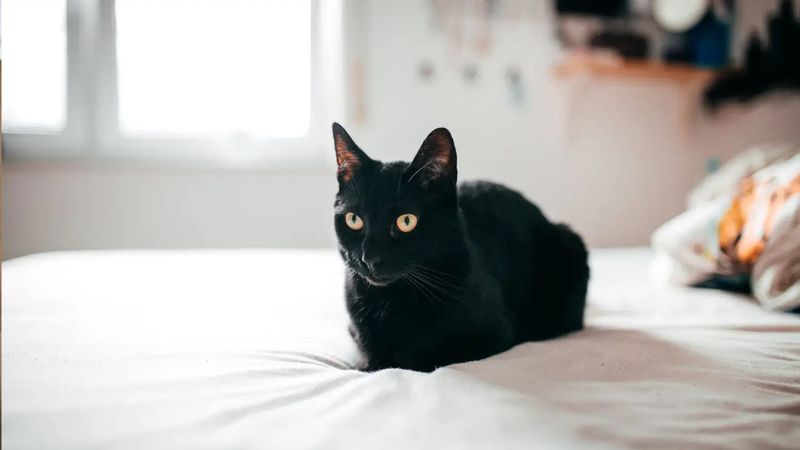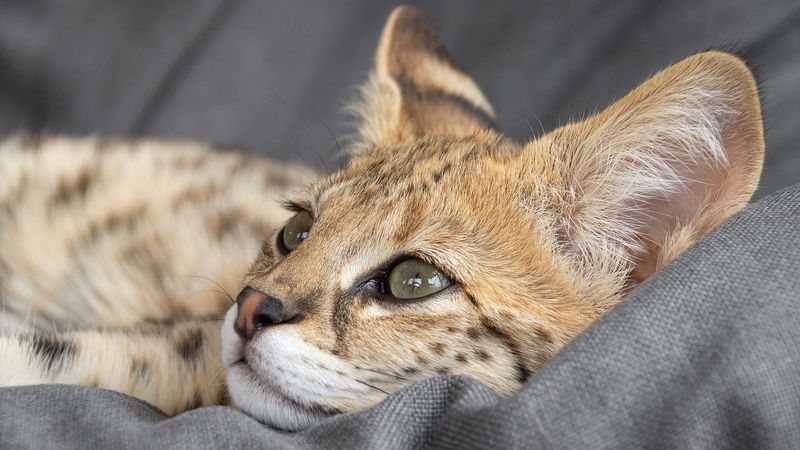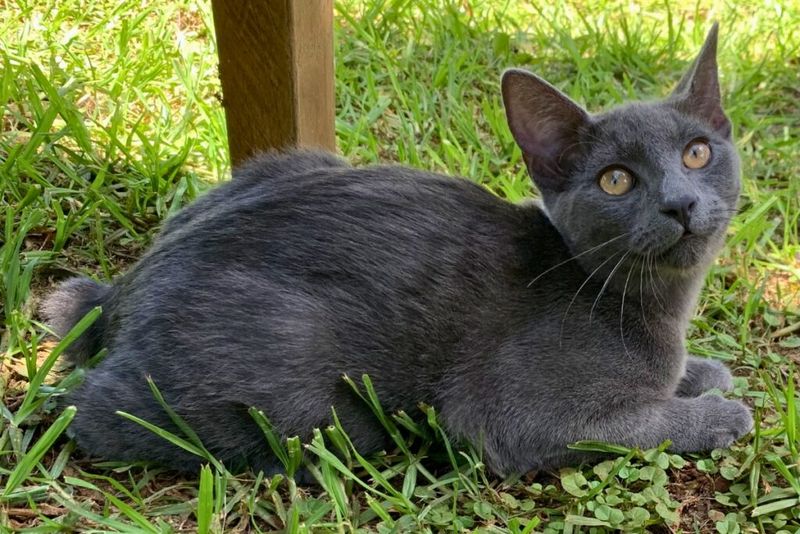📖 Table of Content:
Cats each have distinct personalities that influence their behavior and reactions. While some felines experience anxiety and require extra comfort to feel safe, others carry themselves with bold confidence. Recognizing these differences is key to offering the proper care and environment for every cat to flourish.
Anxiety-prone cats may show signs of stress or nervousness, especially in new or busy surroundings. These sensitive souls benefit from calm spaces and gentle reassurance to build trust and ease their worries. Providing a stable routine and safe spots can help these cats feel more secure and loved.
On the other hand, confident cats navigate the world with ease and curiosity, often seeking out new experiences without hesitation. Their fearless nature allows them to adapt quickly and enjoy a wide range of activities. Knowing which personality your cat has ensures a supportive home that nurtures their well-being and happiness.
1. Persian
Persian cats often struggle with anxiety due to their sensitive nature. These fluffy companions can become overwhelmed by loud noises, sudden movements, or changes to their environment.
Creating a quiet, stable home with designated hiding spots helps these cats feel secure. Persians benefit from gentle handling and predictable routines that minimize stress.
Their long, luxurious coats require regular grooming, which can serve as bonding time when approached with patience. Start grooming sessions early in their lives to help them associate the experience with positive attention rather than stress.
2. Siamese
Known for their strong bonds, Siamese cats often struggle with being apart from their humans. Their vocal nature can turn into howling, pacing, or destructive habits during prolonged absences.
Their intelligence requires mental stimulation through interactive toys, puzzle feeders, and training sessions. Without proper enrichment, Siamese cats can develop anxiety-related behaviors like excessive grooming or tail chasing.
Providing a consistent schedule and gradually increasing alone time helps these social cats adjust to separations. Consider adopting a companion cat to keep your Siamese company when you’re away.
3. Ragdoll
Despite their laid-back appearance, Ragdolls can experience anxiety in new or unpredictable environments. Their preference for routine means that unfamiliar people or pets can cause stress. Providing consistency helps keep these gentle cats at ease.
Their docile nature makes them vulnerable to feeling overwhelmed in chaotic households. Ragdolls thrive in calm, quiet spaces where they can observe from a safe distance before engaging.
Slow introductions to new experiences help build their confidence. These cats respond well to positive reinforcement training and gentle encouragement rather than being forced into uncomfortable situations.
4. Abyssinian
When anxious, Abyssinians tend to display hyperactivity and struggle to relax. Their sharp minds benefit from planned playtimes that provide focus and help ease anxiety-driven actions. Consistent stimulation is key for their well-being.
Environmental enrichment is crucial for Abyssinians. Provide climbing trees, window perches, and rotating toys to keep their active minds engaged. Without proper stimulation, these cats may develop compulsive behaviors like excessive grooming or pacing.
Consistency in handling and interactions helps Abyssinians feel secure. They benefit from clicker training and food puzzles that provide mental challenges while building confidence through successful problem-solving.
5. Devon Rex
Although lively and playful, Devon Rex cats possess sensitive dispositions. Strong connections to their favorite humans mean they can become anxious when left alone. Their emotional bonds make them prone to separation stress.
Their thin coats make them vulnerable to cold, which can trigger stress responses. Provide warm sleeping areas and monitor their comfort in cooler environments. Devon Rex cats communicate their anxiety through excessive vocalization or hiding.
These social butterflies need gentle socialization from kittenhood to build confidence with strangers. They respond well to calming pheromone diffusers and benefit from having predictable daily routines that include interactive playtime with their trusted humans.
6. Himalayan
Anxiety runs in Himalayan cats due to their Persian heritage. They thrive in serene settings and may become distressed by noise and busy households. Providing a peaceful space is essential for their comfort.
Their flat faces make them prone to breathing difficulties when anxious, so monitoring their stress levels is important. Himalayans show anxiety through excessive hiding or reduced appetite.
Creating elevated resting spots allows these cats to observe their surroundings from a safe position. They benefit from having multiple retreat options throughout the home where they can escape overwhelming situations. Gentle brushing sessions can help soothe an anxious Himalayan while maintaining their beautiful coat.
7. Cornish Rex
Bursts of restless energy reveal anxiety in Cornish Rex cats. Their finely tuned sensitivity to surroundings can spark stress reactions like overgrooming or tummy troubles. Keeping their world steady helps calm their nerves.
These cats have minimal fur for protection, making them physically and emotionally vulnerable to environmental stressors. They need warm, draft-free spaces to feel secure. Cornish Rex cats benefit from predictable feeding schedules and play sessions.
Their intelligence requires mental stimulation through training and puzzle toys to prevent anxiety-related behaviors. These social cats form strong bonds with their families and may become distressed when left alone for long periods.
8. Burmese
Deep bonds make Burmese cats prone to separation anxiety. These social felines become unsettled when their daily routines are interrupted or when left alone without warning. Consistent companionship is essential to their well-being.
Their social nature means they’re sensitive to household tensions and may absorb stress from their humans. Burmese cats show anxiety through excessive vocalization or clingy behavior.
Providing environmental enrichment through climbing structures and interactive toys helps reduce anxiety. These intelligent cats respond well to clicker training, which builds confidence while creating positive associations with potentially stressful situations. Consider adopting Burmese cats in pairs to help them cope with time alone.
9. Sphynx
Sphynx cats may appear bold, but many experience anxiety due to their lack of protective fur. These naked felines are physically vulnerable to environmental stressors like temperature changes, which can trigger emotional stress responses.
Their heightened sensitivity makes them reactive to household tensions. Sphynx cats require stable, warm environments to feel secure. They show anxiety through excessive clinginess or hiding under blankets.
Providing sweaters for cooler days and sunny windowsills for warming helps meet their physical needs, reducing anxiety. These social cats benefit from gentle handling from an early age to build confidence. Their need for physical contact makes them susceptible to feeling abandoned when left alone.
10. Scottish Fold
The iconic folded ears of Scottish Folds can hide signs of anxiety beneath their charming looks. Since ear position often signals a cat’s mood, their unique ears make it tricky to gauge stress levels.
These gentle cats prefer peaceful environments and can become overwhelmed by loud noises or chaotic households. Scottish Folds show anxiety through subtle signs like decreased activity or hiding more than usual.
Their cartilage condition requires gentle handling, and rough play can increase their anxiety. Creating predictable routines helps these cats feel secure. Scottish Folds benefit from having dedicated safe spaces where they can retreat when feeling overwhelmed.
11. Balinese
Balinese cats experience anxiety when their need for interaction goes unmet. These vocal relatives of the Siamese form deep bonds with their families and become distressed when separated from them.
Their high intelligence requires mental stimulation to prevent anxiety-related behaviors. Balinese cats may express stress through excessive grooming, resulting in bald patches or skin irritation.
Providing climbing opportunities and interactive toys helps these active cats channel their energy positively. They benefit from having a consistent routine and dedicated daily play sessions. Consider teaching your Balinese tricks and commands to engage their minds while building their confidence.
12. Exotic Shorthair
The anxiety-prone nature of Exotic Shorthairs stems from their Persian heritage. Known for their soft, teddy bear-like appearance, these cats prefer peaceful surroundings and can become stressed by sudden sounds or movements.
Their brachycephalic facial structure makes them prone to breathing difficulties when anxious, requiring careful monitoring during stressful situations. Exotics show anxiety through hiding or refusing to eat.
Creating low-stress environments with multiple hiding options helps these sensitive cats feel secure. They benefit from having a consistent feeding schedule and gentle, predictable handling. Exotic Shorthairs form close bonds with their families and may become anxious when household dynamics change.
13. Tonkinese
Social deprivation can trigger anxiety in Tonkinese cats. Known for their active and affectionate nature, they thrive on close bonds and may experience distress during prolonged solitude. Keeping them engaged helps prevent stress.
Their vocal nature means they’ll communicate anxiety through increased meowing or yowling. Tonkinese cats need environmental enrichment through climbing structures, window perches, and interactive toys.
Providing consistent routines helps these sensitive cats feel secure. They benefit from having a feline companion to interact with when humans are away. Tonkinese respond well to clicker training, which channels their intelligence while building confidence through positive reinforcement.
14. Japanese Bobtail
In households with multiple pets, Japanese Bobtails may show anxiety if they sense their status is challenged. Their lively nature calls for structured play to direct energy constructively and ward off anxiety symptoms. Providing regular engagement helps maintain harmony.
Their intelligence requires mental stimulation through puzzle feeders and training. Japanese Bobtails show anxiety through increased vocalization or marking behaviors.
Creating vertical space with cat trees and shelves helps these cats feel secure by giving them escape routes from stressful situations. They benefit from having consistent feeding times and play sessions. Japanese Bobtails are sensitive to their owners’ emotions and may become anxious in tense households.
15. Korat
Strong emotional ties in Korats can trigger separation anxiety when apart from loved ones. Their striking silver-blue coats hide a sensitive nature that craves constant companionship. Providing steady interaction helps keep them calm.
Their sensitivity to environmental changes makes them prone to stress when routines are disrupted. Korats show anxiety through reduced appetite or increased hiding behaviors.
Providing consistent daily routines helps these traditional cats feel secure. They benefit from gentle introduction to new experiences and people. Korats respond well to quiet play sessions and positive reinforcement training. Their intelligence means they need mental stimulation to prevent anxiety-related behaviors.
1. Maine Coon
With their impressive size and regal bearing, Maine Coons radiate self-assurance. Their distinctive tufted ears and thick, flowing tails enhance their substantial build, sometimes tipping the scales at 25 pounds. They carry themselves like true royalty.
Their self-assured nature makes them excellent companions for multi-pet households. Maine Coons greet visitors with curiosity rather than fear and adapt easily to new situations.
Despite their size, these cats move with surprising grace and confidence. They’re not afraid to voice their opinions with distinctive chirps and trills. Maine Coons maintain their composure in situations that might stress other cats, making them natural leaders in the feline world.
2. Bombay
Bombay cats strut through life with panther-like confidence. These sleek black beauties know they’re stunning and aren’t afraid to demand attention from everyone they meet.
Their outgoing personality makes them natural performers who enjoy being the center of attention. Bombays will confidently approach visitors and insert themselves into any gathering. They’re not easily intimidated by new situations or loud noises.
These mini-panthers have no problem claiming the best spots in the house as their own. Their self-assured nature makes them excellent therapy cats who confidently provide comfort in unfamiliar environments. Bombays balance their bold personality with genuine affection for their chosen humans.
3. Bengal
Exuding wild self-assurance, Bengals match their exotic looks with fearless behavior. These athletic felines leap to high places and examine every corner of their territory with relentless curiosity.
Their self-assured nature means they rarely back down from a challenge. Bengals confidently introduce themselves to visitors and often appoint themselves as household greeters. They maintain their composure in situations that might stress other cats.
These mini-leopards aren’t afraid to speak their minds with distinctive vocalizations. Bengals confidently explore new environments with minimal hesitation. Their natural athleticism and coordination give them the physical confidence to attempt impressive jumps and maneuvers that would intimidate less assured cats.
4. Savannah
Savannahs own any room they enter with their striking wild appearance and commanding presence. These tall, lean cats carry themselves with the confidence of their serval ancestors, moving with purpose and grace.
Their impressive size and exotic looks naturally draw attention, which these confident cats thoroughly enjoy. Savannahs approach new situations with curiosity rather than fear. They confidently investigate strange objects or unfamiliar people without hesitation.
These social cats aren’t shy about demanding interaction on their terms. Their athletic abilities give them the confidence to leap to impressive heights or navigate challenging obstacles. Savannahs maintain their composure in chaotic environments that would overwhelm more sensitive cats.
5. Russian Blue
With a poised and composed demeanor, Russian Blues embody quiet confidence. Their shimmering silver-blue fur complements their regal attitude, allowing them to command attention gently but firmly. They are the dignified rulers of their households.
Their self-assured nature is evident in their relaxed body language and direct gaze. Russian Blues confidently establish routines and expect their humans to follow them. They’re not easily flustered by household changes or unexpected events.
These intelligent cats assess situations carefully before deciding how to respond, showing confidence in their decision-making. Russian Blues aren’t afraid to set boundaries with gentle but firm communication. Their quiet authority and dignified presence earn them respect from both humans and other pets.
